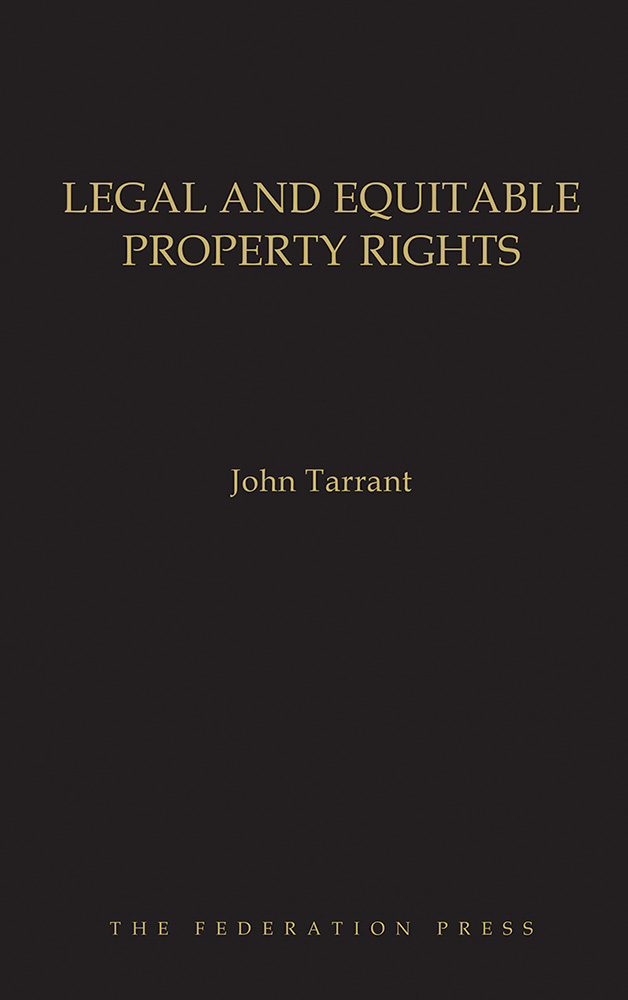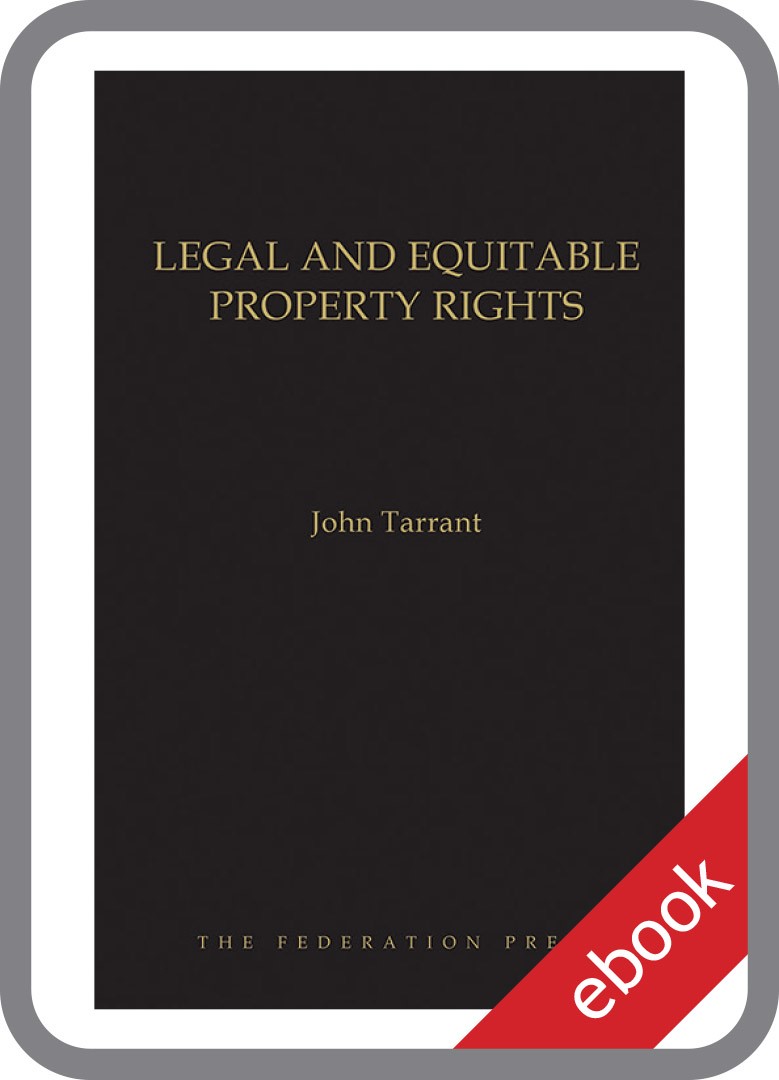This book provides a precise understanding of legal and equitable property. John Tarrant sets out a unifying theory of legal and equitable property rights and shows how property rights fit within private law.
The book:
- examines the case law concerned with property rights to identify what concept of property has been adopted by the courts;
- outlines what things can be the legitimate subject of property rights by looking at the case law, and statute;
- demonstrates that our legal system has adopted a thinghood approach to property, and the courts and the legislature determine what things can be the object of property rights;
- explains the different characteristics of property rights, and how they correlate with duties of non-interference and obligations, and how some private law property rights also have a public law aspect.
Tarrant shows how legal and equitable property rights fit within private law by demonstrating that private law only has two purposes: first, to protect personal integrity; and second, to protect private property (our things) through the availability of a range of private law remedies. In simple terms, private law provides remedies for people and for their tangible and intangible things in interactions with other legal persons.
Foreword by The Hon Justice Lucy McCallum, New South Wales Court of Appeal
Preface
Table of Cases
Table of Statutes
1. The Property Puzzle
Property theories
Scope of the book: developing a property theory
2. Property as Rights to Things
Different approaches to what is property
(i) The multitude of individual rights approach
(ii) The thinghood approach
(iii) The incidents of property approach
(iv) Adoption of the thinghood approach
(v) Identifying intangible things that exist
Limitations on the things that can be objects of property rights
The difficulty of exclusion
Property does not equate with wealth
3. Legal Property Rights with Different Characteristics
Descriptive property rights
(i) Crown radical title, native title and freehold estates
(ii) Tangible personal property
(iii) Intellectual property as a property right
Enforceable property rights
(i) Obligations as property
(a) Money obligations as objects of property rights
(b) Non-money contractual obligations as objects of property rights
(c) A right to bring an action
(ii) Shares in corporations
Property rights without an object
Three types of property rights
Property rights that attach to other things
Property rights with a public law aspect
4. Legal Property Rights and their Place in Private Law
The Birks taxonomy
The Grantham and Rickett modification
An alternative approach to classifying private law
5. Equitable Property Rights and their Place in Private Law
The origin of equitable property rights and equitable ownership
The nature of equitable rights
The place of equitable property rights in private law
6. Legal Ownership and Equitable Ownership
Legal ownership
(i) Exclusive benefit
(ii) The power to dispose
(iii) Full legal ownership and residual legal ownership
Equitable ownership
(i) Requirements for equitable ownership
(ii) Trusts with no equitable owners
(iii) Defining equitable ownership
Equitable property rights less than equitable ownership
(i) Contracts for sale and purchase
(ii) Equity of redemption
(iii) Rescission in equity
(iv) Fixed and floating charges
(v) Liquidation of a corporation
(vi) The creation of sub-trusts
(vii) Unadministered deceased estates
7. Utilising Two Levels of Property Rights
Stolen money and stolen goods
Breach of a fiduciary duty
Unlawful killing of a joint tenant
Mistaken payments
Contractual flexibility
Index
His book represents a notable and important contribution to the existing literature, and comes timeously at a moment when the world is still learning to deal with the effects of rapidly developing technology. One has confidence that Legal and Equitable Property Rights will provide fresh stimulus in the continuing debate over the legal nature of property taking place throughout the Commonwealth.
Lau Kwan Ho, Singapore Journal of Legal Studies, [2020]






